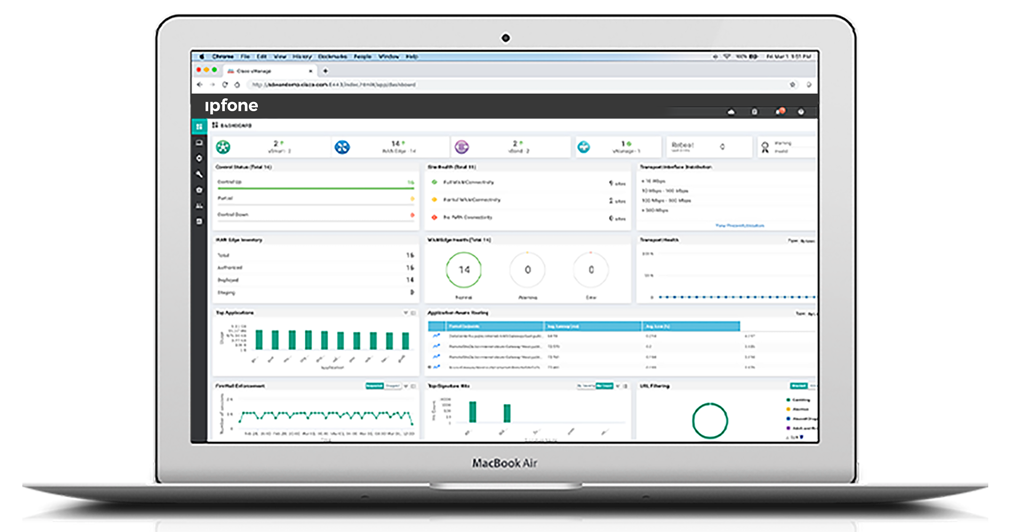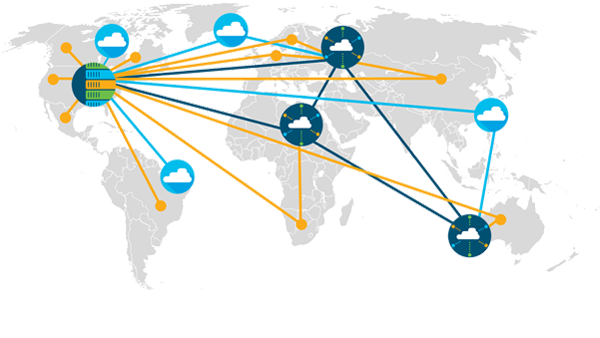SD-WAN
Cisco SD-WAN powered by Meraki offers a solution that simplifies network management for network administrators while lowering operational costs and improving application perfomance


Intelligent Internet
Managment
Software-defined WAN is a new approach to network connectivity that lowers operational costs and improves resource usage for multisite deployments. Now network administrators can use bandwidth more efficiently and can help ensure the highest level of performance for critical applications without sacrificing security or data privacy.
Identity-Based Firewall
Automatically assigns firewall and traffic shaping rules, VLAN tags, and bandwidth limits to enforce the right policies for each
class of users.
Intrusion Prevention
Protects critical network resources from the latest security threats and vulnerabilities.
Auto VPN
Securely connects branch locations using mesh or hub-and-spoke topologies. Provides simple VPN access into Amazon Web Services and Microsoft Azure.
Content Filtering
Block undesirable web content across 70+ categories, and leverage cloud lookups to filter billions of URLs.
High Availability & Failover
Provides device and connection integrity through multiple uplinks, warm spare failover, and self-healing VPN.
Advanced Malware Protection
Protect your network against malware using the latest threat intelligence, and identify previously unknown malicious files with retrospective detection.
Application Visibility & Control
Securely connects branch locations using mesh or hub-and-spoke topologies. Provides
simple VPN access into Amazon Web Services and Microsoft Azure.
Centralized Management
Seamlessly manage campus-wide WiFi deployments and distributed multi-site networks from a single pane-of-glass.
Benefits of
SD-WAN
SD-WAN is the ideal solution for multi-site network management. Control your entire deployment from one location with SD-WAN.
- Simplify Management
- Improve Application Performance
- Reduce Costs
- Improve User Experience
- Increase Security and Realiability
- Content Filtering





